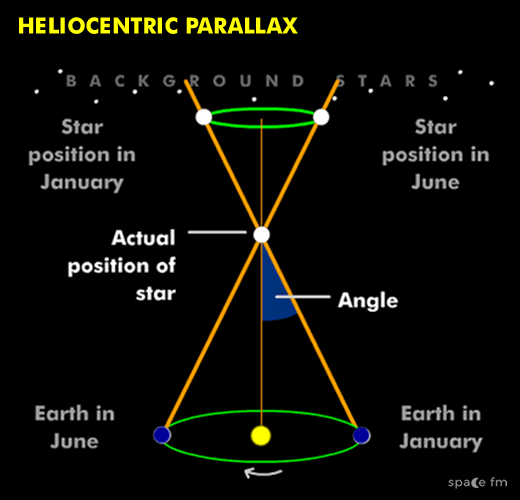Heliocentric Parallax
13.12 - Be able to determine astronomical distances using heliocentric parallaxHere's an experiment. Hold your thumb up about 30 centimetres (or one foot) in front of your eyes. Close one eye, look at it with the other and see the background behind it. Now repeat it with the other eye and do this a few times. You can see that swapping eyes makes the angle of the thumb and the background appear differently.
We measure the distance to stars using a similar method.
This is called heliocentric parallax. We can measure the distance to nearby stars by measuring how much they appear to move against distant stars. How do we on Earth change angles to do this? Easy - we measure it in one month and then again six months later when the Earth is on the opposite side of the Sun (this is the heliocentric bit!).
By figuring out how much the star moves we can work out the angle and from there the distance using the AU between Earth and Sun as a base to measure by.
Incidentally all stars have a parallax smaller than an arc second as all stars (apart from our Sun) lie greater than a parsec (3.2 light years) away.
We define a parsec by the distance a star needs to move an arc second.
Questions
- Describe how scientists can use heliocentric parallax to establish the distance to nearby stars.
- Draw a diagram to explain heliocentric parallax.
Distances
We will look at three ways to determine distances to stars:
- Heliocentric Parallax
- Cepheid Variables
- Using the HR Diagram
Links
- Hands on Universe What is parallax?
- Michael Richmond Heliocentric Parallax

 | © All Rights Reserved |
| © All Rights Reserved |